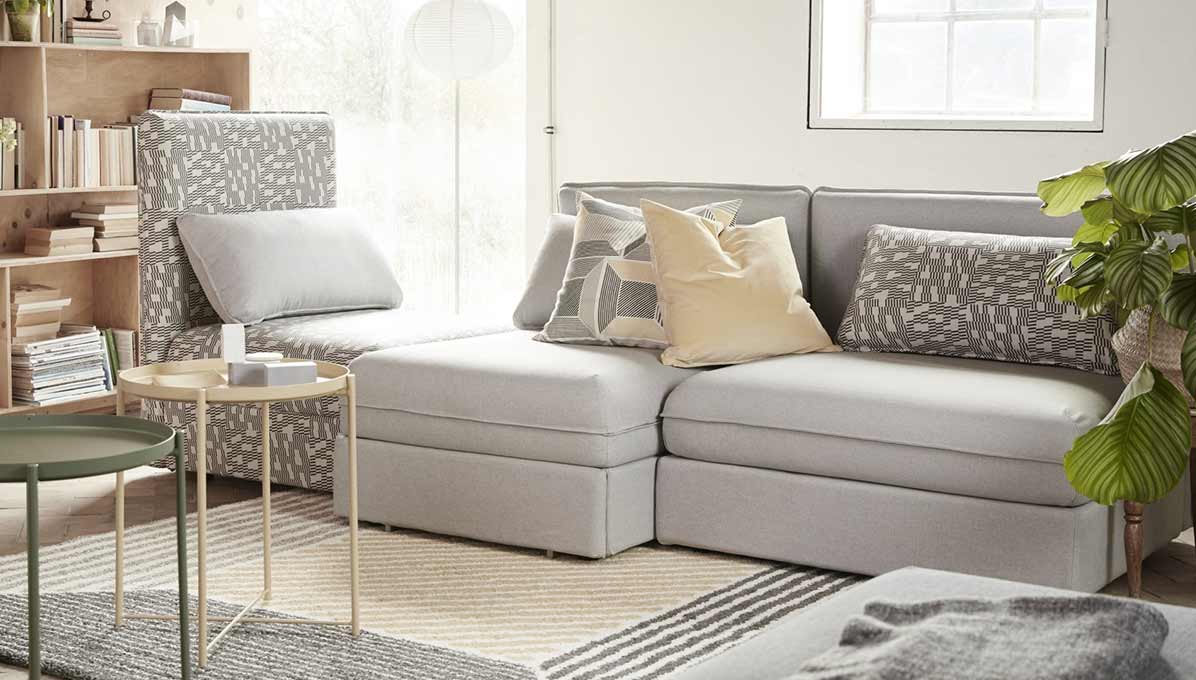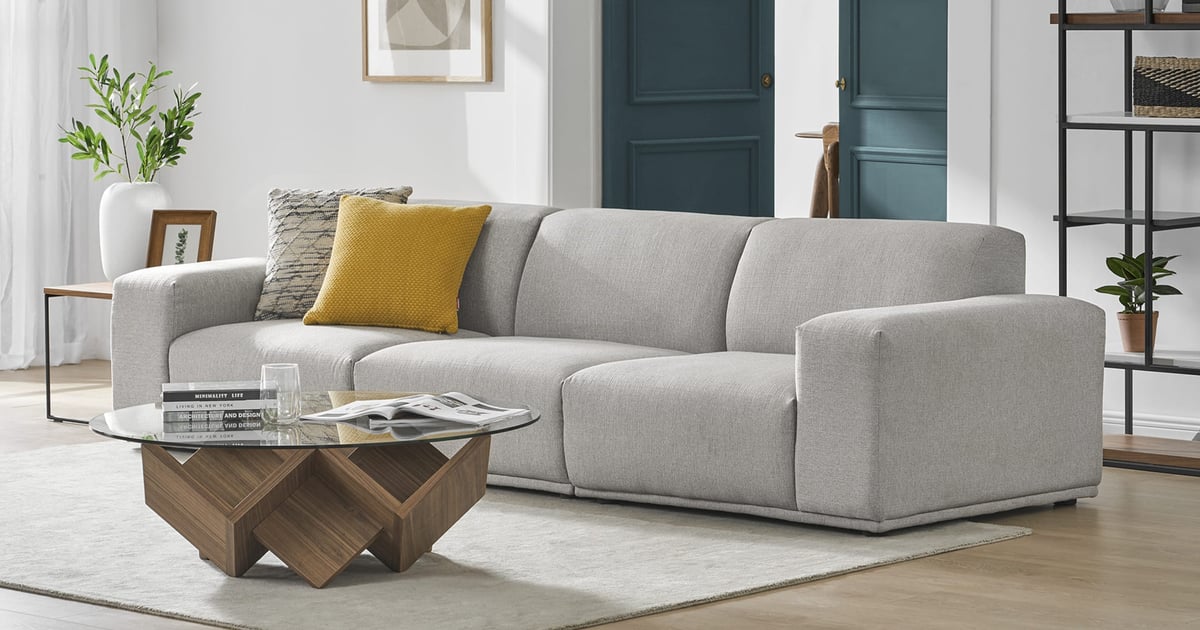Over time, sofa cushions can lose their shape, become lumpy or flattened, develop stains, and show general signs of wear. When your cushions reach this point, replacing them can make a dramatic difference in restoring the appearance, comfort, and functionality of your sofa. Replacing worn cushions may seem daunting, but it can be done successfully DIY when you follow some key steps.

Do A Thorough Inspection of the Sofa Frame and Support Structure
Before starting the process of picking out and installing new cushions, it’s imperative to fully examine the sofa frame, base, springs, and all support components. Check for any loose, damaged, or sagging areas of the frame. Feel for broken or protruding springs or suspension parts. Look for cracks, splits, or instability in the frame joinery or legs. Any issues with the underlying sofa structure can lead to premature failure or deterioration of newly upholstered cushions. Address any needed repairs, reinforcements, or part replacements to ensure your sofa provides a sound foundation for the fresh cushions.
Precisely Measure Your Existing Cushions
Take detailed measurements of the cushions you aim to replace, as this is key for sourcing ideal replacements. Use a soft measuring tape to carefully measure length, width, thickness, and profile curves of each individual cushion. Follow any seams or edges precisely, as cushions often overhang past the actual frame. Don’t assume symmetry – cushions can shift and compress unevenly over time. Note measurements for seat cushions, back cushions, arms, etc separately. Even small differences matter for achieving a custom fit. Stuff the original cushions with batting or foam to restore shape if severely misshapen before measuring. Record all measurements to have on hand for reference.
Purchase Compatible Replacement Cushions
Armed with your precise cushion dimensions, begin searching online and in stores for suitable replacement options. Many retailers allow you to filter by specific length, width, and thickness ranges to narrow options comparable to your measurements. Avoid having to make major alterations by selecting cushions very close to your original specs. Match the fill material and density to provide equivalent comfort and support. Choose fabrics and colors that coordinate well with existing upholstery that will remain. For patterned fabrics, bring swatches to find the best match possible. Have your measurements handy when ordering to confirm compatibility.
Make Minor Adjustments to Achieve an Ideal Fit
It’s likely some small tweaks will be needed once you unpack the new replacement cushions to get them sitting just right. Use sharp upholstery shears to carefully trim down cushion foam or fill if the replacements are slightly oversized. Add batting, foam, or inserts to shim out gaps if the new cushions are a bit small. Work slowly and gently to avoid over-trimming. Follow any manufacturer guidelines on cushion break-in periods, as sizing may adjust some over time. The goal is cushions that slide smoothly into position without gaps or need to force into place.

Securely Attach Replacement Cushions
It’s crucial to firmly fasten the refreshed cushions to the sofa frame using upholstery tacks, heavy-duty staples, high strength fabric glue, or ties. Refer to the original cushion placement and attachment points. This helps distribute weight properly and keep cushions from shifting around. Check for any areas where the frame needs structural reinforcement to reliably hold cushions in place. Improper attachment can quickly lead to instability, uneven wear, and misshaping.
Blend Fabrics and Patterns
When replacing just some of the cushions, make sure to find upholstery fabrics that closely coordinate with those remaining on the sofa. Bring swatches of the original fabrics when shopping for the best color and pattern match. Opt for neutral solids over bright prints or bold patterns, that can clash if not an exact match. Use welting or contrasting piping to transition any seams between old and new cushions. The goal is a cohesive, seamless look once the new cushions are installed.
Consider Hiring an Experienced Upholsterer
For sofas with more intricate construction, curved shapes, sectionals, or custom cushions, your best bet is often having a professional upholsterer replace cushions for you. They have technical expertise on properly shaping foam, matching fabrics, and securely installing replacements. This is the safest route for valuable antique or delicate upholstered furniture. While more costly than DIY, it can save much time and frustration.
Allow Time to Break In New Cushions
Freshly upholstered sofa cushions are often quite firm at first compared to softer, broken-in originals. Expect some break-in period for replacement cushions. Gently press, flex, and sit on them for 20–30 minutes at a time to help conform to your body contours. Avoid overly rough housing new cushions to prevent permanent compression or distortion. Follow manufacturer guidelines for curing times before use. With light use, they should soften up nicely.
Maintain Cushions Properly
Replacing cushions is wasted effort if you don’t care for them properly over time. Follow good habits like frequently rotating, spot cleaning spills promptly, fluffing and redistributing fills, and vacuuming to prevent dirt buildup. Try to evenly distribute wear by varying seating positions. Abide by any specific care instructions from the cushion manufacturer. Proper maintenance helps replacement cushions retain their fresh look and last for years.
Know When It’s Time to Remake Cushions Entirely
In less severe cases of cushion wear, simply replacing the fabric covers while keeping the original fills may do the trick to refresh things. But once cushion fill is extremely compressed, shifts around, becomes lump or completely misshapen, or interiors collapse, it’s usually best to replace cushions from scratch. Remaking cushions fully ensures restored comfort, support, and appearance.
With some handy DIY skills or help from an upholstery professional, you can successfully replace those worn out sofa cushions. Follow these in-depth steps and tips to revitalize the look, feel, and function of your tired sofa. It’s very satisfying to breathe new life into a favored piece of furniture with replacement cushions sewn to fit it perfectly.
